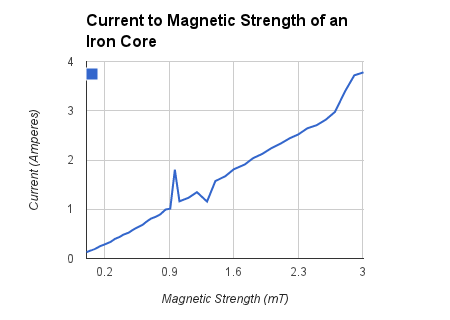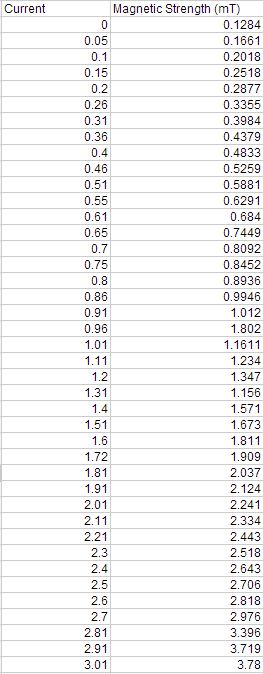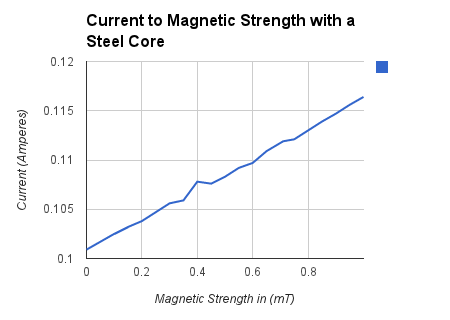Data
Iron Core
|
Our results actually surprised us, based on how many
errors could have occurred there were very few errors that 
|

|
Steel Core
|
They steel core produced an even stronger line of correlation.
The correlation was .998588. The Steel core did not have an error 
|

|
Conclusion
Here is the excel data collected |
Here is the text data collected |
Here is the original paper
The results showed that both the iron and steel cores form linear lines
of current to magnetic strength. Our hypothesis was correct even to our
own surprise. Both iron and steel cores showed strong lines of linear regression.
It was unexpected that the steel core showed a stronger line of regression.
I think that the data came out this way because there were double the data points
for the iron core than the steel core. Giving the iron core more chances to stray from
a perfect linear line. The main errors were caused when taking data for the iron
core and were most likely that I bumped the able and the magnet got misaligned with MEMS.
If I was to do the experiment over again I would use larger magnets with a larger wire
to enable me to use a larger current. I would also track the voltage to help solidify
what the current should be and make sure it stays steady because there were times where
I spent 2 minutes trying to get it to get even close to a certain current. Over all the
experiment was fun and I learned a lot about magnetism.
